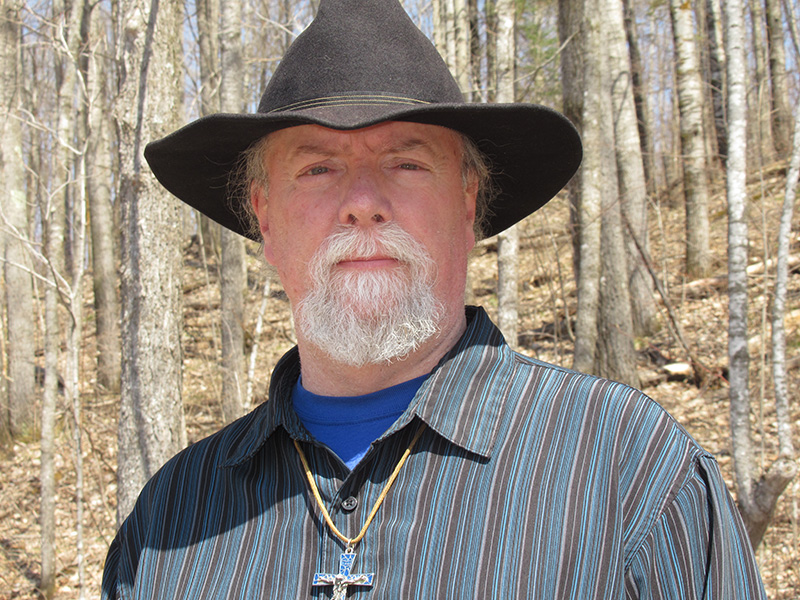Dcn. Brian J. McCaffery
Editor’s note: This is one of a series of articles on how deacons serving in the diocese answered their calling. Dcn. McCaffery serves St. Ann, Cable, and St. Joseph, Hayward.
In an important respect, my pathway to the diaconate was like that of the very first deacons described in the Acts of the Apostles. Seeing a need, the apostles commissioned the community of the disciples to “look around among your own number” from whom to choose the first deacons. The community selected their candidates and presented them to the apostles, “who first prayed over them and then imposed hands upon them.” Significantly, the invitation to the diaconate arose from the pastors (i.e., the apostles) and the community, not the individuals.
My own calling was similar. Our pastor at Immaculate Conception parish in Bethel, Alaska, asked the parish council to seek out potential candidates for the diaconate from our community. The council asked if I’d be willing to serve as a deacon. With my wife, Christine’s, support, I agreed to enter the deacon training program. The council then notified the pastor, who approved my selection and forwarded the parish’s request to the bishop of the Diocese of Fairbanks, who accepted me into the training program.
At the same time, another parishioner, Louie Andrew, was invited by our parish’s senior deacon to consider becoming a deacon. He also agreed and together the two of us entered into the Native Deacon Training Program of the Diocese of Fairbanks, Alaska. In fact, as a result of my acceptance into the program, it was re-named the Rural Deacon Training Program.
Because of both culture and logistics, our training was quite different from that in most American dioceses. To begin with, our training was geared very specifically for serving the Native American residents of our remote region — the Yukon-Kuskokwim Delta. Thus, we used a three-volume text, Builders of the New Earth, which had been developed by Jesuit priests specifically for preparing diaconal candidates from among the Native Americans of South Dakota.
Second, because we lived in a vast region which was virtually roadless, and air travel was expensive, the regional diaconal candidates gathered together only one to two times a year at the old mission which served as the pastoral center for the Delta. Instead, and particularly over the last couple of years of training, the priest leading the training program typically visited each village with candidates two to three times annually, rather than having all the candidates travel to the mission for sessions together. That provided more personal training, but we missed the camaraderie and fellowship when all the candidates gathered.
By the year 2000, we had completed the first three years of our four-year program, and were looking forward to ordination in 2001. Then tragedy struck. During the jubilee year, Bishop Michael Kaniecki committed to visiting each of his 46 parishes, which were spread across the diocese’s 400,000 square miles. Bishop Mike was a pilot and he embraced this Herculean effort, regularly flying to reach the more remote villages. In August of 2000, he flew to the small village of Emmonak on the banks of the Yukon River, and while walking along the river before Mass, he suffered a massive heart attack and died.
Mourning his loss, our diocese waited nearly two years for the appointment of our new bishop, Bishop Donald Kettler, in June of 2002—just months after the Boston Globe broke their devastating story of clergy abuse in the church. Although that scandal would consume much of Bishop Donald’s time and energy over the ensuing years, he made it a priority to ordain his diaconal candidates. So, on Nov. 4, 2002, Bishop Kettler ordained Louie and me to the permanent diaconate in our home parish, launching us on our mission of diakonia—service to others.
Since that time, in addition to regularly assisting at Mass and preaching, as well as baptizing, presiding at funerals and witnessing weddings, I’ve tried to serve in other ways. I’ve led Confirmation classes and RCIA, taught the Theology of the Body to junior high students, led Bible studies, given a seminar on the kerygma, and done prison ministry. I’ve produced videos about the Stations of Light and written, performed and produced music about domestic violence. I’ve given seminars about both domestic violence and the kerygma to clergy and laity. I’ve drafted a manuscript about the harsh side of Jesus, and I’ve just finished drafting a devotional guide to the Stations of Light. Soon I’ll be serving on and helping to coordinate our parish’s evangelization team, and most recently, I gave two seminars about The Theology of a Spaghetti Western. Although my ministry over the last two decades as often inspired me to be creative and occasionally “outside the box,” my entire ministry is only made possible by the grace of our Lord Jesus Christ. Blessedly, it has all blossomed from the seed first planted by my parish council a quarter-century ago when they asked, “Would you be willing to be a deacon?”

Dcn. Brian J. McCaffery
